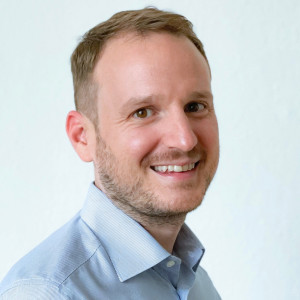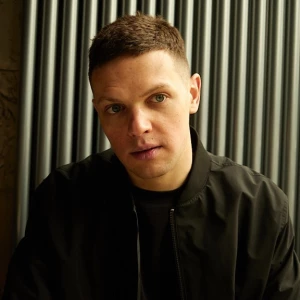"Your friend inherited 20 acres of land and wants you to make a recommendation on what he could/should do with it."
I struggle with such unconventional questions. Any help?
"Your friend inherited 20 acres of land and wants you to make a recommendation on what he could/should do with it."
I struggle with such unconventional questions. Any help?


Hi!
A very clear approach would be:
Step 1: Verify the objective (e.g., generating money from the land)
Step 2: Identify High Level Options how the land can be used, e.g.,
Step 3: Quantify the (present) value of each option in terms of money
Step 4: Double check your capability to execute the preferred option and verify the potential risks that might come along with this option
I hope this helps!
Sidi
___________________
Dr. Sidi S. Koné
Former Senior Engagement Manager & Interviewer at McKinsey | Former Senior Consultant at BCG | Co-Founder of The MBB Offer Machine™

The first question you should ask what is his/her objective. That will drive the structure.
If the objective is to make money, then you would do a profitability analysis given the parameters you have been provided. To make it more targeted, you will ask follow up questions on if he has target profits in mind, timeline etc.
Key inputs:
1. Sources of Revenue drivers
2. Calculate corresponsing Value generation
3. Cost drivers
4. Corresponding Cost estimates
Net profit = Revenue - cost
If the objective is non-profit, then you would need to create a non-profit case structure. Again, your clarifying questions will determine the next steps.
Your ultimate goal here is to do the demand and supply analysis, based on the objective.
Example Inputs requred to identify objective:
1. Do they want to target a specific demographic (Students, elders, children etc.)
2. Interest in a specific sector (health care - hospital, education - school)
3. Size of impact (serve >1000 people)
4. Constraints - financial, timeline, socio economic, political
5. Any other factors to keep in mind?
These inputs will drive the nexts stage of doing a demand and supply analysis for this land, to see which opportunities the land can meet.
Your interviewer may keep it very open ended, in which case you will brainstorm options based on the top priorities.
In gist - this case structure will be driven by understanding the objectives and digging deeper into underlying priorities.
Rememer, you may encouter a tough interviewer who may not easily give you the answers you need to proceed. If that happens, then most important is keep your calm and keep asking questions that will help you move forward. That is the best you can do.

Hi there,
This case isn't so weird and it's actually quite ‘typical’ for Partner cases, where the Partner couldn't be bothered to prepare a real case…
FOR CONTEXT: I have had many examples of this at McKinsey, including when I recruited myself. Interviewers at the firm shouldn't do it, because it's really quite different from the official format that one should follow as an interviewer. But who's going to tell the Partner off?
SOLUTION: The trick with these cases is that they don't present so much of a problem, rather than opportunity. Whenever there's no success criteria and/or specific metrics, you can and should establish them with a green light from the interviewer. Think of this as an ‘opportunity statement’. From then on, it's your show because you can take it in any direction.
For example: If your goal is to build an ecosystem for conservation of endangered animal species, your approach will be different compared to wanting to establish a new urban housing development. The interviewer won't care so much, so long as you come up and follow through an approach that matches the opportunity statement.
The latter could also be two-fold e.g., maximum return per m2 as a primary goal and conservation of wildlife as a secondary goal. Just don't make it too complicated for your own sake.
Hope this helps a bit. Best of luck!
Moritz
~~~~~~~~~~~~~~~
>> Need a senior McKinsey coach? See my profile in a nutshell
>> Need real McKinsey cases? See two real examples with Zero Carbon Mine (hard) & Car Convenience (Intermediate + brand new)

Too easy.
In addition to what Sidi outlined, clarify more about the person who inherits the land and add “synergies” block you your analysis. If the friend already owns / operates some kind a business, he may extract additional value from this land.
Also, consider the opportunity cost. If the friend decides not to inherit the land, a competitor might purchase it, which can affect us negatively. (I actually did a version of this case in which this was exactly an issue).
Regards,
Nick

Certainly! When faced with unconventional questions like this, it's important to approach them with a structured and analytical mindset. Here's a framework you can use to make a recommendation for your friend's 20 acres of land:
Assess the Market: Start by understanding the current market conditions and trends in the area where the land is located. This will help you identify potential opportunities and demand for different land uses.
Conduct a Feasibility Study: Evaluate the feasibility of different options for the land. Consider factors such as zoning regulations, infrastructure availability, and environmental considerations. This will help narrow down the possibilities.
Analyze Potential Uses: Explore various potential uses for the land, such as residential, commercial, agricultural, or recreational. Assess the market demand, profitability, and long-term sustainability of each option.
Financial Analysis: Conduct a financial analysis for each potential use. Estimate the costs involved in developing the land for each purpose, including infrastructure, construction, and ongoing maintenance. Evaluate the potential returns and profitability of each option.
Risk Assessment: Identify and assess the risks associated with each potential use. Consider factors such as market volatility, regulatory changes, and potential environmental or legal issues. Mitigate risks by developing contingency plans or seeking expert advice.
Stakeholder Engagement: Engage with relevant stakeholders, such as local authorities, community members, and potential investors or buyers. Understand their perspectives and gather insights that can inform your recommendation.
Make a Recommendation: Based on your analysis, weigh the pros and cons of each potential use and make a recommendation that aligns with your friend's goals, financial capacity, and risk appetite. Provide a clear rationale for your recommendation, highlighting the potential benefits and risks involved.
Remember, this framework is just a starting point. It's important to adapt it to the specific details of your friend's situation and gather as much information as possible to make an informed recommendation.
I hope this helps you tackle the unconventional question! If you have any further questions or need additional guidance, feel free to ask.

Hi there,
So, there is a difference between how to structure this case and solve it and what a good framework would be.
Sidi has a good answer here.
Ultimately, I CANNOT create a framework until I have my CLARIFYING Qs answered…my framework fundamentally changes once I know:
Once I have these questions answered (or declined to answer!) I can framework them
https://www.preplounge.com/en/articles/how-to-shift-your-mindset-to-ace-the-case

Building on other's suggestions.
You can you land for:
- Agriculture
- Foresty
- Resources (if it has any)
- Residential use
- Commercial use
- Tourism
You need to know which ones are available / would make sense. You can even start by asking if any of these are out of the table (most likely they are, you need to ask what land uses are legally accepted).

I love these.
That's why I work with candidates to teach structuring from first principles rather than frameworks.
If you get this during an interview and all you know is a library of patterns / frameworks, you're bound to get stuck.
To give you a first step into the process, start by putting yourself into the shoes of the client, then the shoes of their customer. Brainstorming what would be the first idea that would come into your head. Then try to group them into areas. This is the bottom-up part of the exercise.
Next comes the top-down part.
You can also read more about structuring techniques in the following guide. Hope you'll find it helpful.
Best,
Cristian
———————————————
Practicing for interviews? Check out my latest case based on a first-round MBB interview >>> SoyTechnologies

Sounds very similar to a current BCG case in Germany. Start with the strategic imperative (what's the goal here, make money, do something sustainable etc.). Feel free to ping me for a free coffee chat to complete your answer to this one. Warm regards, Frederic











